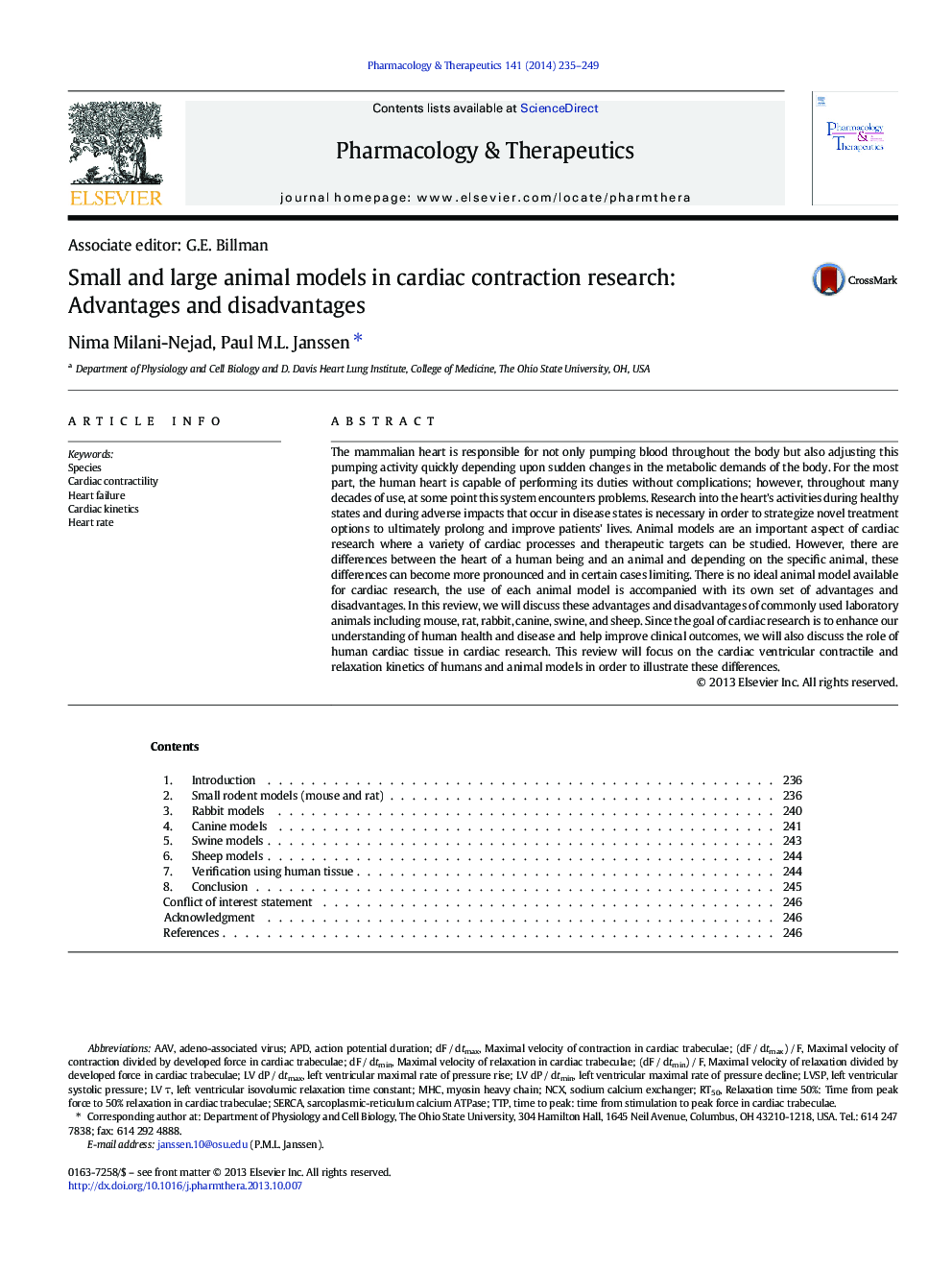| کد مقاله | کد نشریه | سال انتشار | مقاله انگلیسی | نسخه تمام متن |
|---|---|---|---|---|
| 2563798 | 1127566 | 2014 | 15 صفحه PDF | دانلود رایگان |
The mammalian heart is responsible for not only pumping blood throughout the body but also adjusting this pumping activity quickly depending upon sudden changes in the metabolic demands of the body. For the most part, the human heart is capable of performing its duties without complications; however, throughout many decades of use, at some point this system encounters problems. Research into the heart's activities during healthy states and during adverse impacts that occur in disease states is necessary in order to strategize novel treatment options to ultimately prolong and improve patients' lives. Animal models are an important aspect of cardiac research where a variety of cardiac processes and therapeutic targets can be studied. However, there are differences between the heart of a human being and an animal and depending on the specific animal, these differences can become more pronounced and in certain cases limiting. There is no ideal animal model available for cardiac research, the use of each animal model is accompanied with its own set of advantages and disadvantages. In this review, we will discuss these advantages and disadvantages of commonly used laboratory animals including mouse, rat, rabbit, canine, swine, and sheep. Since the goal of cardiac research is to enhance our understanding of human health and disease and help improve clinical outcomes, we will also discuss the role of human cardiac tissue in cardiac research. This review will focus on the cardiac ventricular contractile and relaxation kinetics of humans and animal models in order to illustrate these differences.
Journal: Pharmacology & Therapeutics - Volume 141, Issue 3, March 2014, Pages 235–249
